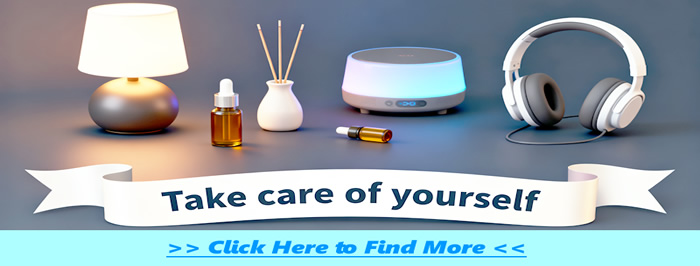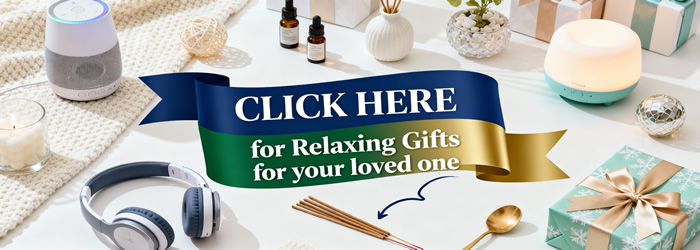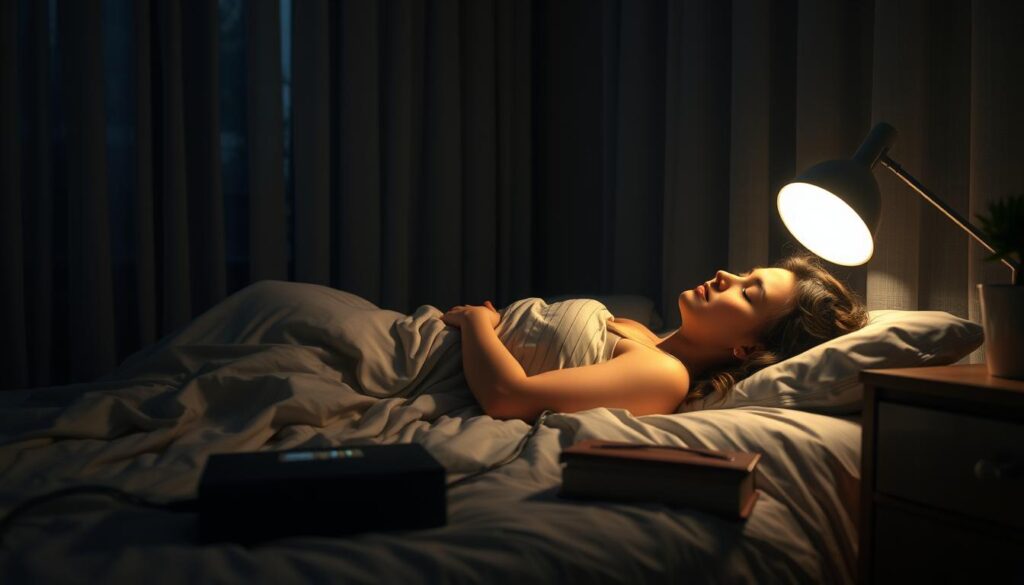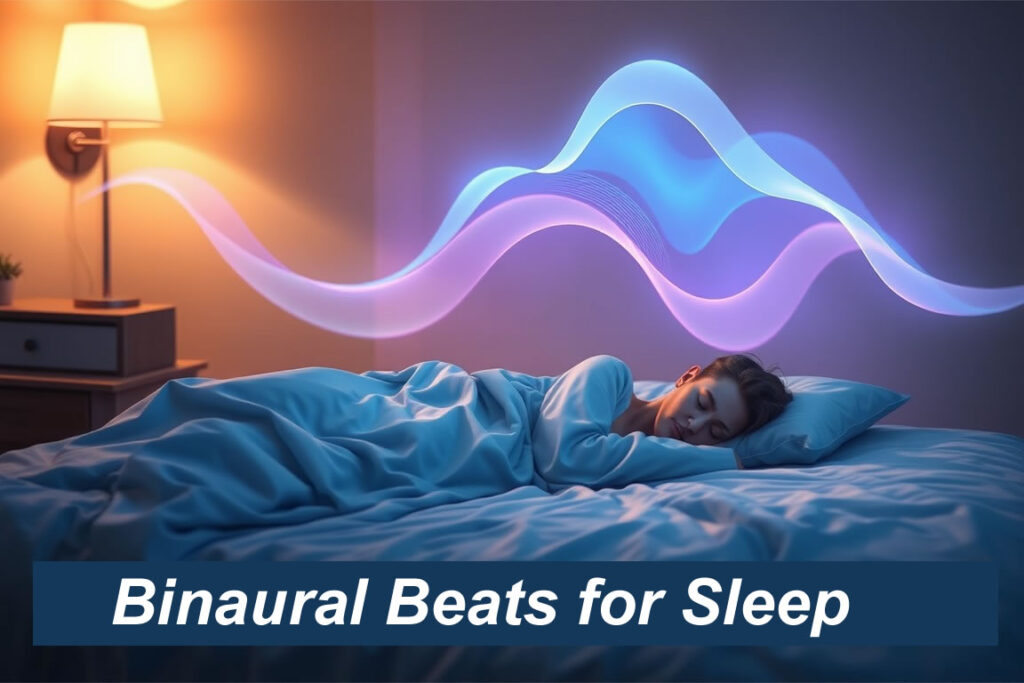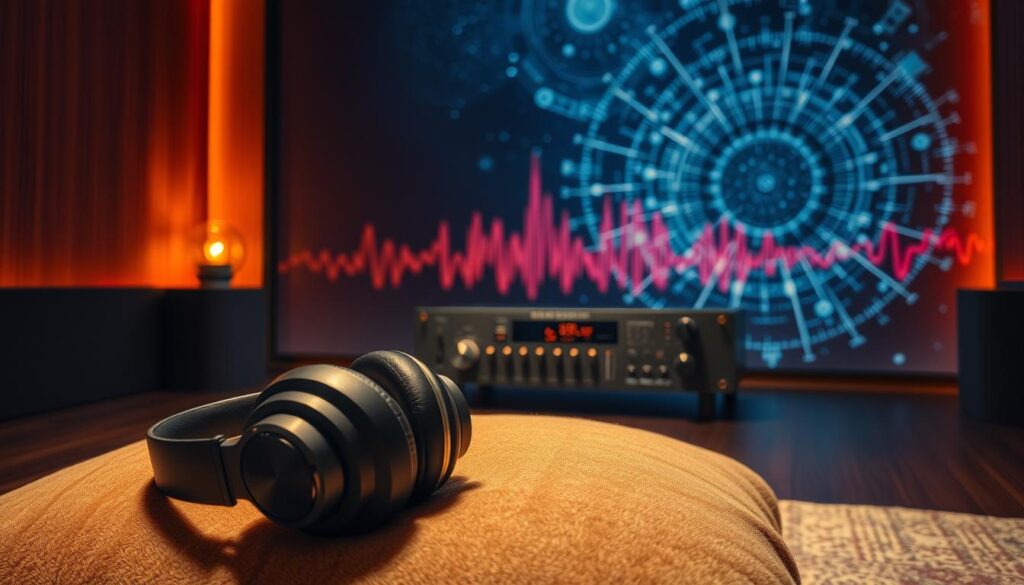Binaural beats create a unique auditory experience by playing slightly different frequencies in each ear. The brain blends these tones into a single rhythmic pulse, which supporters claim can improve focus, relaxation, or sleep. To achieve this effect, proper audio delivery is critical—closed-back designs ensure each ear receives distinct signals without interference.
Not all audio devices work equally well for this purpose. Over-ear styles typically outperform earbuds because they isolate external noise and maintain consistent sound quality. This isolation helps the brain process the frequency difference clearly, maximizing the intended therapeutic benefits.
When selecting gear, prioritize comfort and technical performance. Sessions often last 30 minutes or longer, so padded ear cups and adjustable headbands matter. Look for models that balance crisp treble with deep bass to handle the layered tones effectively.
Options exist for every budget, from affordable everyday pairs to high-end studio-grade sets. Even basic earbuds can technically function, but dedicated equipment elevates the experience. The right choice depends on personal needs—whether enhancing meditation routines or optimizing sleep cycles.
Introduction to Binaural Beats and Their Benefits
Using sound waves to alter brain activity, binaural beats offer diverse health benefits. This audio technology plays distinct frequencies in each ear, creating an internal rhythm that may influence mental states. Studies suggest these rhythms can help reduce stress, improve sleep quality, and sharpen focus without medication.
- Natural support for relaxation during meditation or high-pressure tasks
- Enhanced cognitive performance during work or study sessions
- Improved emotional balance through targeted frequency patterns
The process works through brain wave entrainment, where neural activity aligns with the perceived beat. This synchronization may guide users into deeper focus during creative projects or help calm racing thoughts before sleep. Many integrate these sessions into exercise routines to boost endurance or recovery.
Research highlights practical applications:
- Managing chronic discomfort through non-invasive sound therapy
- Strengthening memory retention during learning activities
- Regulating mood swings by stabilizing electrical brain patterns
For optimal results, the sound delivery system must maintain precise frequency separation. Proper equipment ensures each ear receives clean, isolated signals – a critical factor often overlooked by new users.
Understanding Binaural Beats for Meditation and Focus

The human brain’s electrical activity forms the foundation of mental states like deep focus or calm relaxation. Neurons communicate through rhythmic pulses, creating five measurable frequency patterns. These patterns range from Delta waves during sleep to Gamma waves during intense concentration.
The Science Behind Brain Waves
Delta (0.5–4Hz) and Theta (4–8Hz) frequencies dominate during sleep or meditative states. Alpha waves (8–13Hz) signal relaxed alertness, ideal for stress reduction. Beta (13–30Hz) supports daily problem-solving, while Gamma (30+Hz) drives peak cognitive performance.
Binaural tones work by delivering slightly varied frequencies to each ear. The brain perceives a third phantom rhythm matching the difference between these tones. For example, a 300Hz tone in one ear and 310Hz in the other creates a 10Hz Alpha wave effect.
How Binaural Beats Influence Relaxation and Creativity
Targeted audio sessions can shift brain activity toward desired states. Theta-range beats may spark creative insights, while Alpha frequencies promote mindfulness. Precise sound reproduction ensures the brain detects these subtle differences effectively.
Technical limitations matter: base tones under 1500Hz and frequency gaps below 40Hz yield optimal results. High-quality audio gear maintains clarity, letting users harness these effects for tasks like brainstorming or unwinding after stressful days.
Essential Features of Headphone Design
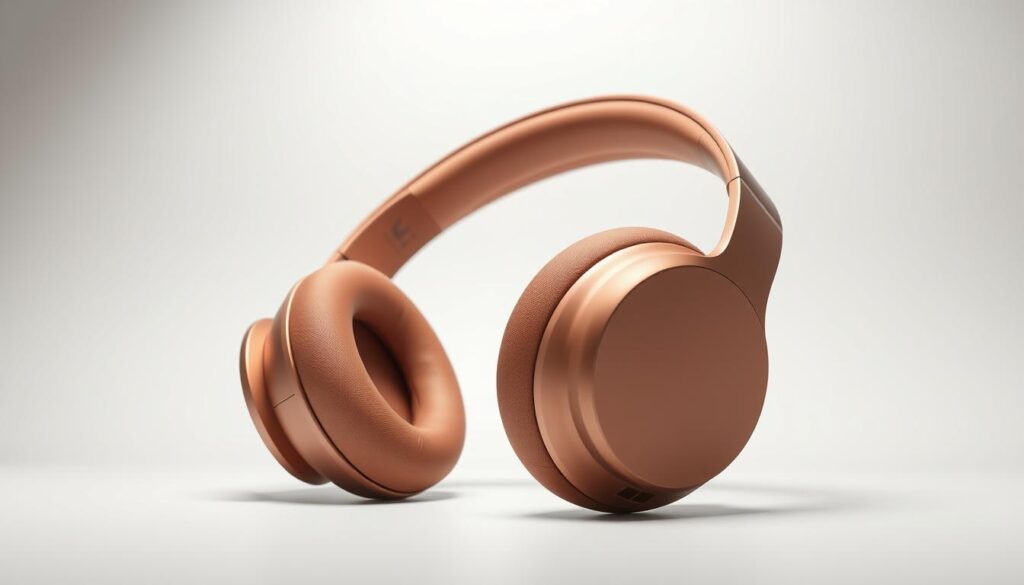
Audio equipment design directly impacts how effectively sound therapy techniques reach the brain. Specific engineering choices determine whether subtle frequency differences remain distinct or get lost in translation.
Closed-Back vs Open-Back: The Listening Experience
Sealed ear cups create a controlled environment where external noise reduction becomes possible. Closed-back models reflect sound inward, producing an immersive effect that heightens perception of layered frequencies. This isolation helps maintain the precise left-right channel separation needed for effective neural entrainment.
Open-back alternatives excel at creating airy, natural soundscapes but sacrifice noise containment. Environmental disturbances and audio leakage often disrupt sessions requiring intense focus. While appealing for casual listening, their design contradicts the needs of therapeutic audio applications.
Frequency Response, Clarity, and Bass Performance
Effective equipment must reproduce frequencies from 20Hz rumbles to 20,000Hz harmonics without distortion. Extended bass response proves critical for sensing the pulsating rhythms that drive brain wave synchronization. Crisp highs ensure the contrasting tones between channels remain audible and distinct.
Mid-range clarity prevents frequency overlap that could muddy the intended effect. Models with balanced tuning across all ranges help users perceive both the physical vibration of low tones and the intricate details of higher harmonics. This technical precision transforms abstract concepts into tangible sensory experiences.
How to Choose the Best Headphones for Binaural Beats
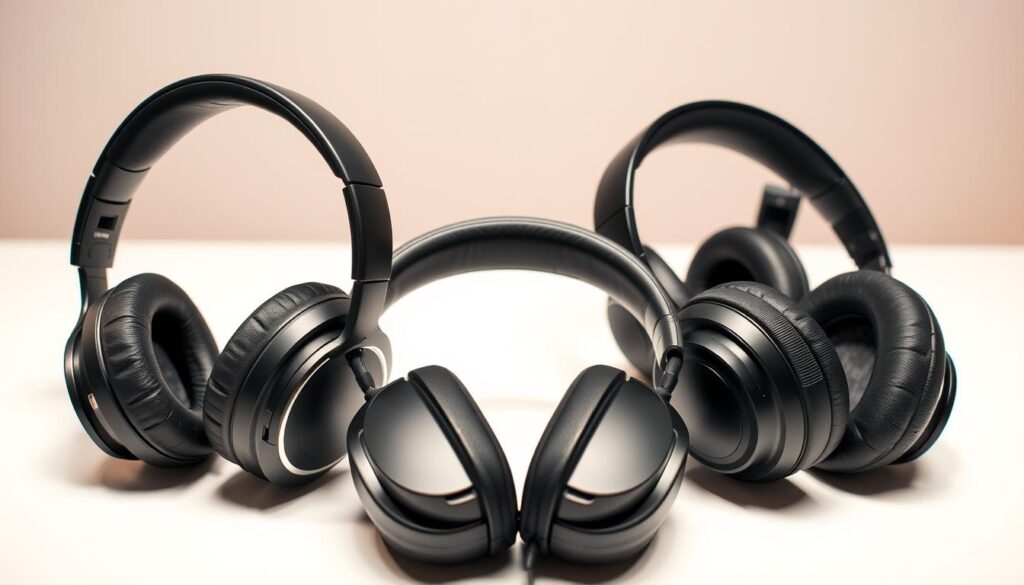
Effective sound delivery hinges on both engineering precision and user-centric design. While basic earbuds can transmit binaural frequencies, their limitations often undermine the experience. Many entry-level models emphasize treble tones, creating a shrill “topsy” effect that masks deeper vibrations essential for neural synchronization.
Balancing Cost and Acoustic Performance
Budget-friendly options under $100 exist, but materials matter. Thin plastic casings and mismatched drivers in cheaper models degrade faster, altering sound profiles over time. A well-built pair maintains consistent frequency separation, crucial for sustained therapeutic benefits.
Premium models from reputable brands often feature reinforced hinges and moisture-resistant components. These details extend product lifespan while ensuring reliable performance during daily meditation or focus sessions. Comfort improvements like memory foam ear pads reduce fatigue in 45+ minute listening periods.
The market accommodates various needs without requiring excessive spending. Mid-range choices strike a practical balance, offering noise isolation and accurate bass response. Prioritize models with verified driver matching – this technical detail prevents channel imbalance that weakens binaural effects.
Exploring Low Price Range Options for Beginners
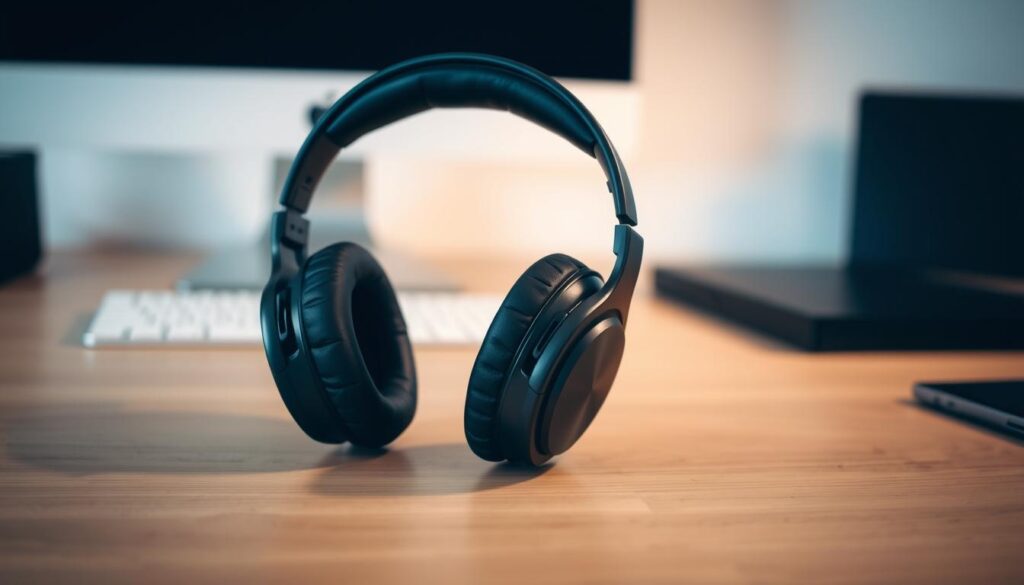
Starting with budget-friendly gear lets newcomers experiment without overspending. Entry-level models now offer surprisingly capable performance for therapeutic audio applications. Closed-back designs dominate this tier, providing essential isolation to maintain frequency separation.
Affordable Options That Don’t Compromise on Isolation
The Koss UR20 delivers clear mids and highs despite its plastic construction. While the materials feel lightweight, the closed-back ear cups effectively block ambient chatter. This makes them suitable for short meditation sessions in moderately quiet environments.
Superlux HD 668B stands out with studio-grade clarity at a fraction of professional costs. Its semi-open design balances external awareness with enough noise reduction for focused listening. Users report accurate bass response that handles layered frequencies without distortion.
Durability and Value in the Entry-Level Market
Sennheiser HD 205 II reinforces critical joints with metal hinges, extending lifespan beyond typical budget models. The snug fit and thick padding allow hour-long sessions without discomfort. Enhanced sound isolation outperforms many competitors under $60.
AKG K72 combines adjustable headbands with replaceable ear cushions, adapting to various head shapes. Though the cable isn’t detachable, its balanced tuning ensures consistent delivery of therapeutic frequencies. These value-packed options prove effective binaural beats don’t require luxury pricing.
Most entry-level pairs last 2-3 years with careful use – sufficient time to gauge interest in sound therapy. Upgrading becomes practical once users establish consistent listening habits.
Mid-Price Range Headphones for an Enhanced Experience
Mid-tier audio gear bridges affordability and premium performance. Models here balance professional-grade components with accessible pricing, ideal for users seeking refined clarity during extended sessions.
Optimal Sound Isolation and Comfort
The Shure SRH-440 offers precise frequency response under $100. Collapsible ear cups enhance portability, while closed-back design minimizes sound leakage. Memory foam pads reduce pressure during hour-long meditation or focus periods.
Sennheiser’s HD 25 maintains iconic status since the 1990s. Reinforced hinges and replaceable parts ensure durability. Its tight seal blocks distractions, favored by DJs yet effective for therapeutic audio applications requiring consistent delivery.
Beyerdynamic’s Custom One Pro Plus features adjustable bass ports. Thick padding and swiveling cups adapt to various environments. This flexibility creates personalized listening experiences without sacrificing noise isolation or mid-range detail.

